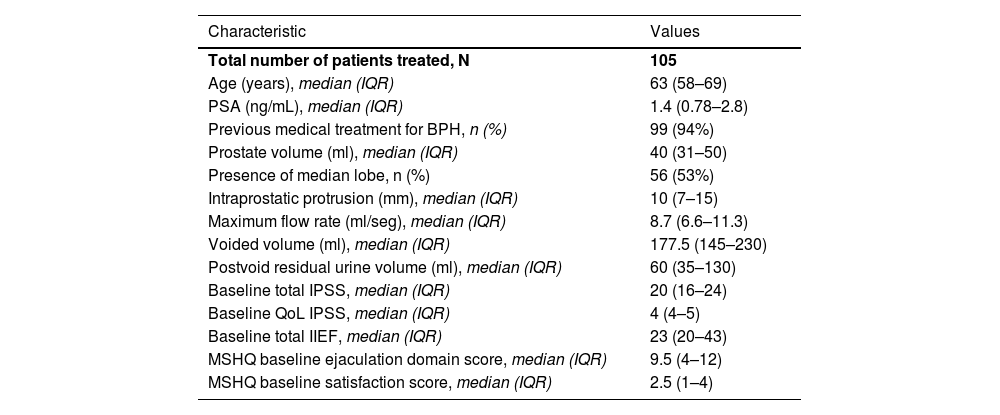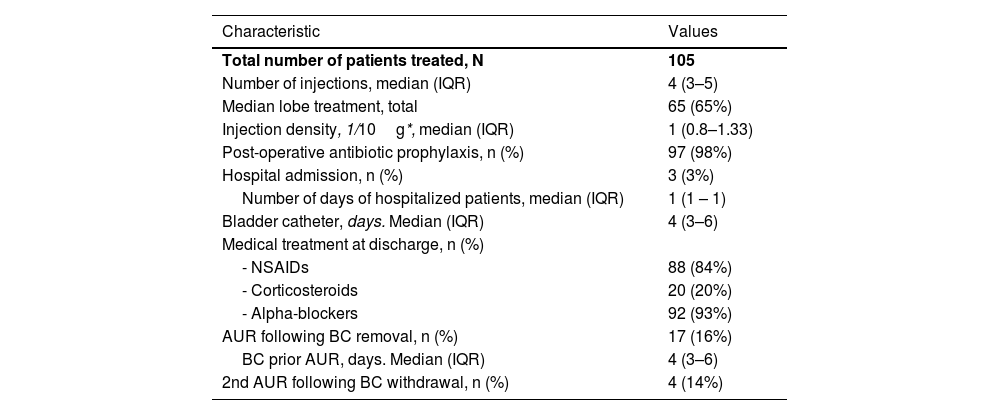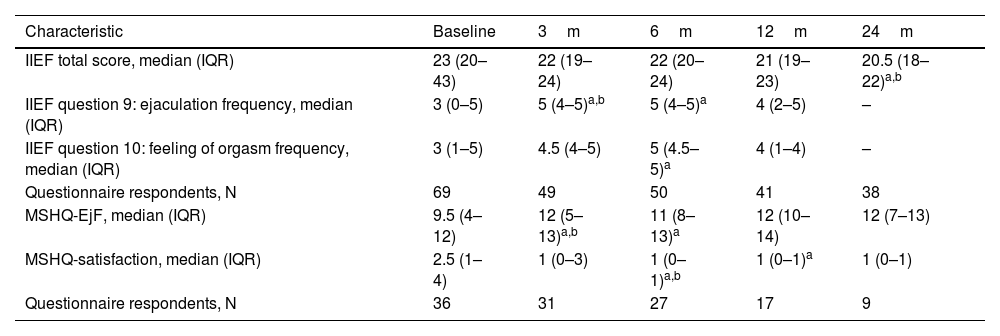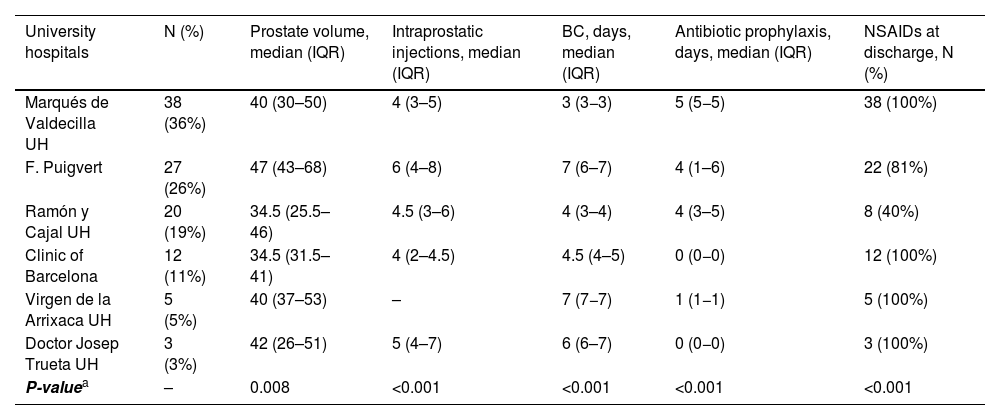The aim of this work is to evaluate the initial experience with water vapor thermal therapy (WVTT) for benign prostatic hyperplasia (BPH) in Spanish university hospitals, as well as to describe the differences in technique and follow-up between centers.
Materials and MethodsThis retrospective observational multicenter study collected baseline characteristics, surgical, postoperative and follow-up data at 1, 3, 6, 12 and 24 months, including validated questionnaires, flowmetric variations, complications, and the need for pharmacological or surgical treatment following the procedure. Possible triggers for postoperative acute urinary retention (AUR) were also analyzed.
ResultsA total of 105 patients were included. No differences were observed between the groups with and without AUR with respect to catheterization time (5 and 4.3 days respectively, P=.178), or prostate volume (47.9g and 41.4g respectively, P=.147). The mean improvement at 3, 6, 12 and 24 months in terms of peak flow was 5.3, 5.2, 4.2 and 3.8ml/s, respectively. As for ejaculation, an improvement was observed after 3 months of follow-up and was maintained over time.
ConclusionsMinimally invasive treatment for BPH with WVTT shows good functional outcomes at 24 months follow-up, without significant impairment of sexual function and a low incidence of complications. There are minor inter-hospital variations, mainly in the immediate postoperative period.
El objetivo de este trabajo es conocer experiencia inicial con la terapia térmico con vapor de agua (TTVA) para hiperplasia benigna de próstata en los hospitales universitarios españoles, así como describir las diferencias en cuanto a técnica y a seguimiento observadas entre los centros.
Materiales y métodoEste estudio multicéntrico observacional retrospectivo recogió características basales, datos quirúrgicos, postoperatorios y seguimiento a los 1, 3, 6, 12 y 24 meses, incluyendo cuestionarios validados, variaciones flujométricas, complicaciones y la necesidad de tratamiento farmacológico u quirúrgico tras el procedimiento. También se analizaron los posibles desencadenantes de retención aguda de orina (RAO) en el postoperatorio.
ResultadosSe incluyeron un total de 105 pacientes. No se observaron diferencias entre los grupos con y sin RAO con respecto a tiempo de sondaje (5 y 4.3 días respectivamente, P=.178), ni volumen prostático (47.9g y 41.4g respectivamente, P=.147). La mejoría media a los 3, 6, 12 y 24 meses en cuanto de flujo máximo fue de 5.3, 5.2, 4.2 y 3.8ml/s, respectivamente. En cuanto a la eyaculación, se observa una mejoría en la misma a partir de los 3 meses de seguimiento que se mantiene en el tiempo.
ConclusionesEl tratamiento mínimamente invasivo de HBP con TTVA presenta buenos resultados funcionales a 24 meses de seguimiento, sin afectación significativa de la función sexual y con una baja incidencia de complicaciones. Existen pequeñas variaciones principalmente en cuanto a postoperatorio inmediato en entre los hospitales participantes en el estudio.











